Advertisement
Why are we seeing more black sea bass in Rhode Island and Massachusetts?
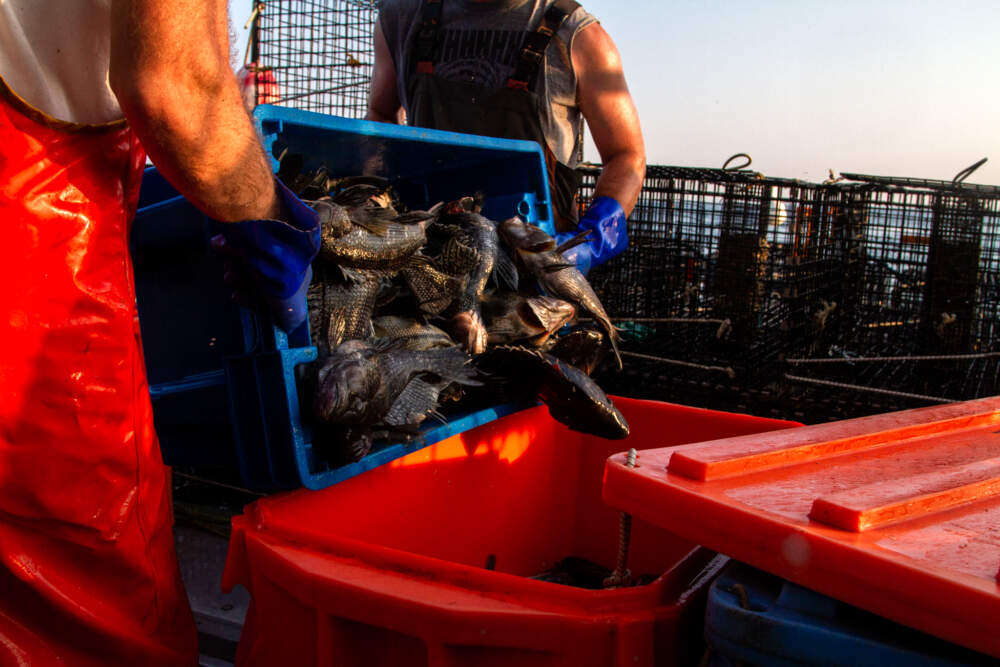
Charlie Borden, a commercial fisherman from the Rhode Island town of Little Compton, got his start targeting lobster when he was just a kid. His dad taught him to fish.
“We used to fish together out of a skiff,” Borden said.
Now 44, Borden still targets lobster, but has since added black sea bass to his repertoire. He was one of the first to target black sea bass in the region. And, as their populations have grown, so has the size of his boat and his crew. He has graduated to his own 47-foot fishing vessel “Drake.”
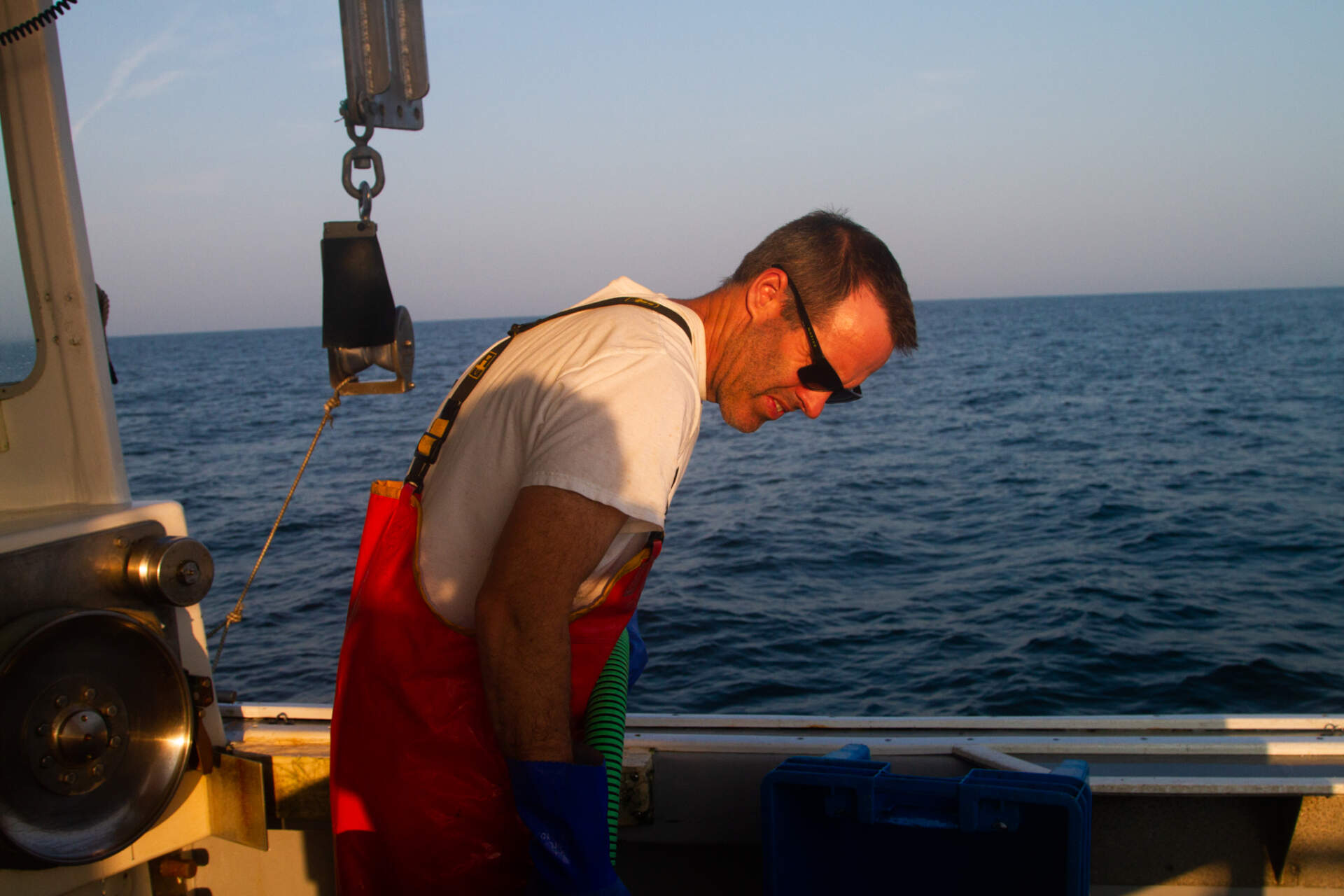
One of his workers, Providence resident Rob Sherman, was beginning to mix up giant vats of clams —bait for black sea bass — at about 5:30 am one morning in late July.
“These are big surf clams. I’d say a little over 400 pounds,” he said.
The sun is hazy red with Canadian wildfire smoke and it’s just finished blooming over the eastern horizon. The still half-frozen clams smell sweet — for now.
“When it’s sitting in the sun gasses build up and it can be pretty damn nasty,” Sherman said.
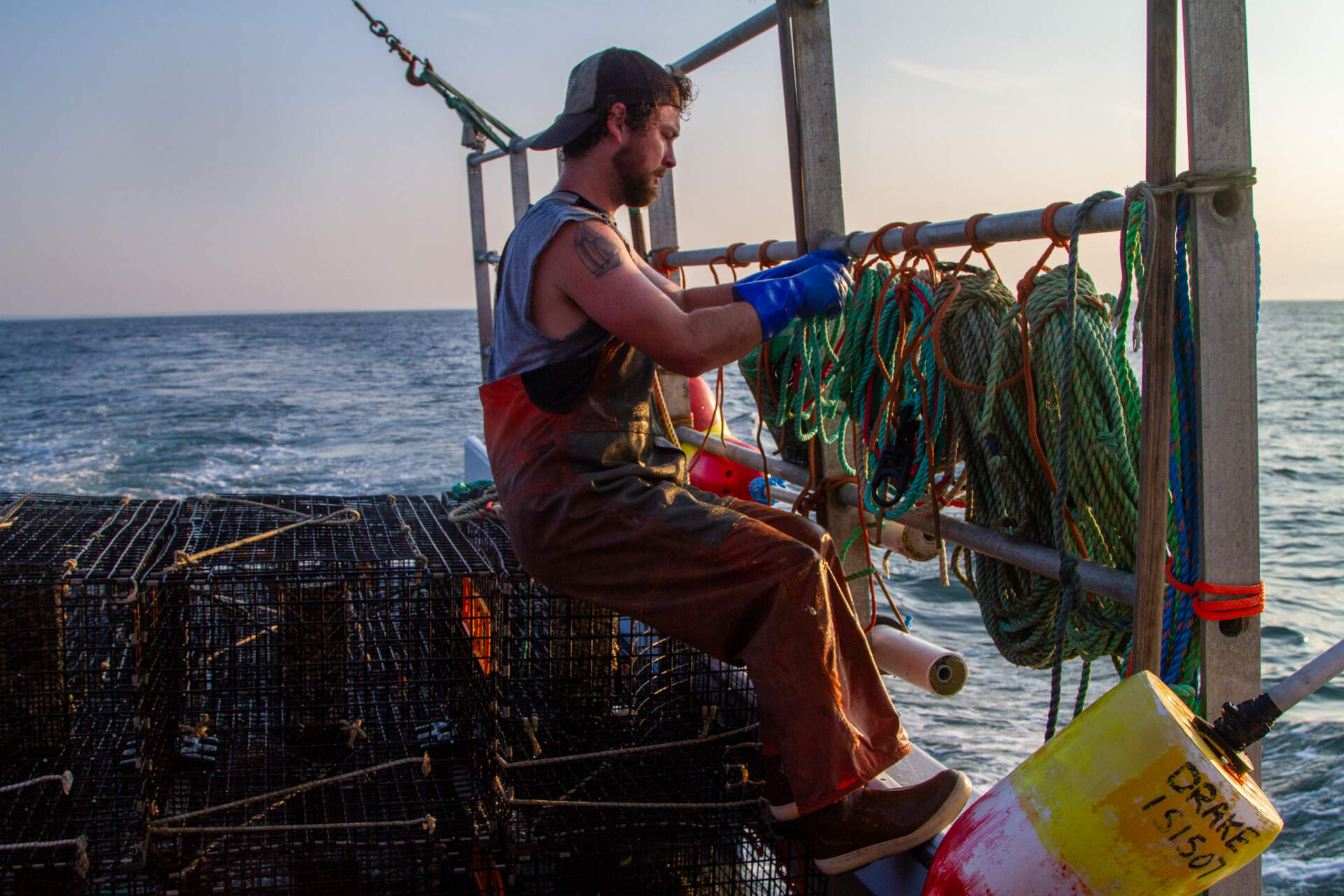
Kelton McMahon, a professor at the University of Rhode Island, says 20 years ago you’d be hard pressed to find the fish in local waters or dinner tables, but the species has become more common in the Northeast over the last decade.
“There's been a huge increase in the black sea bass population around here,” he said.
Sherman is one of many fishermen joining the growing niche of black sea bass fishing. Among the other climate change winners are butterfish and scup, which is also known as porgy. But the list of losers is far, far longer. Among the species expected to be most hurt by climate change are some local favorites, including bay scallops, Atlantic sea scallops, oysters, striped bass, and tautog.
Rules about fishing are changing along with the warming waters, too. As the local population grows, federal and state managers allow fishermen like Borden to target more sea bass. As long as populations continue to go up, more catch allowances can be made. If they go down, the opposite happens.
Advertisement
Julia Beaty is a spokesperson for the Mid-Atlantic Fishery Management Council, the federal body charged with managing the fish. She says this summer NOAA is conducting a bigger and better survey of black sea bass to see how many really are in local waters. They’ll use that data next year to decide on catch allowances.
She says catch allowances need to reflect the reality of our changing climate. It’s possible black sea bass won’t always be here in these numbers.
“That's an opportunity for you to really reevaluate all the aspects of the stock assessment and, you know, try to consider big improvements and new research that's happening right now. Because the distribution is going to continue to change,” Beaty said.
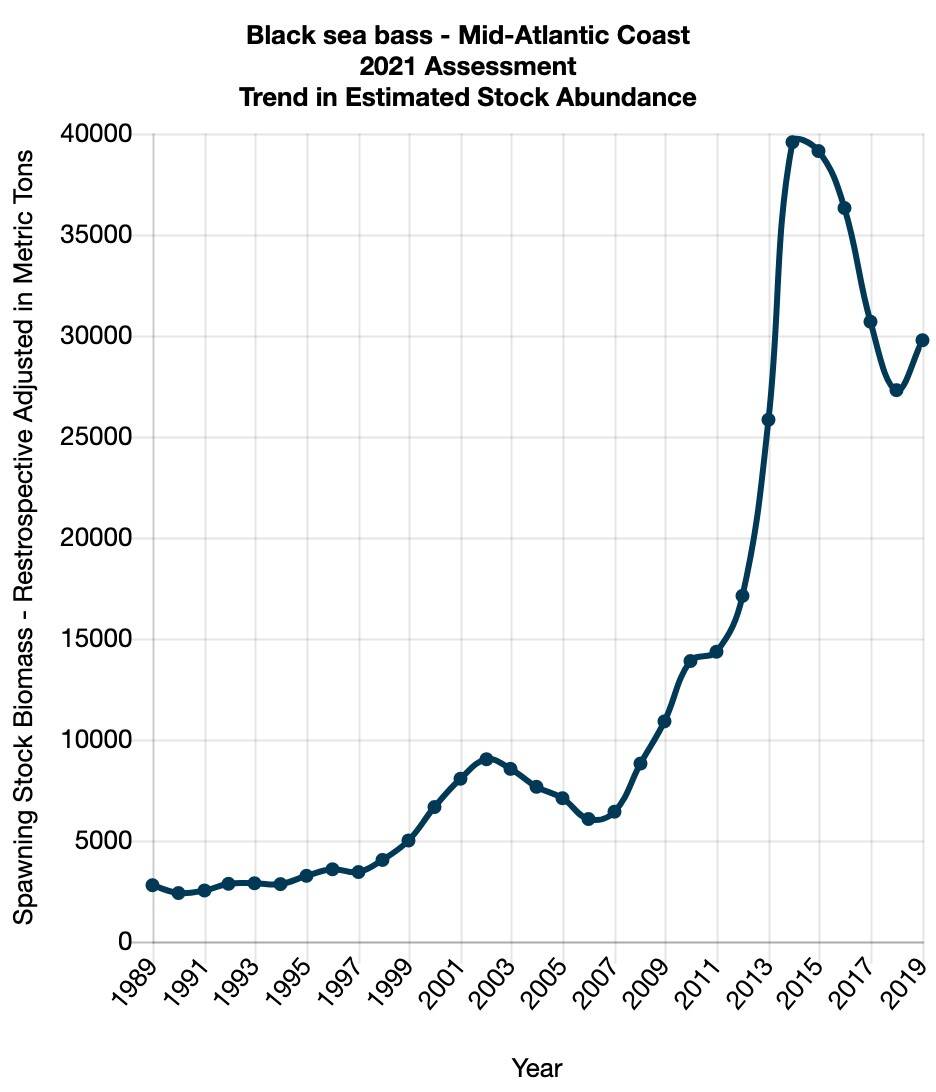
For now, vessel owner Charlie Borden has seen more and more fishermen targeting the species as their numbers have increased. After coming up on his buoys he began to reel up his fish pots that had been sitting for about 18 hours. He then picks through the fish. He throws the little ones back and holds onto the more valuable large fish. The first one is a keeper.
“That’s a prime specimen right there,” he said.
Black sea bass make a wild sound when the fish traps they are caught in get pulled up. They thrash around angrily, spraying water all over and sometimes stabbing one another, or fishermen, with their sharp spines.
“They’re feisty. They’re kind of an aggressive fish,” Borden said. “You kinda wanna grab ‘em by their face. They’re pretty spiny.”

The Rhode Island state government is rallying around the abundance of the fish. It has even hired marketers to educate shoppers on the newly plentiful species. The fact that it’s a really tasty fish makes that job easy. It has a tender yet firm flesh that’s equally delicious in ceviche and tacos.
And scientist Kelton McMahon says he feels okay about looking for black sea bass in the grocery store.
“I'm pretty conscientious about the types of seafood I eat, and so black sea bass is a species I will happily eat here,” he said.
At publishing time, Black Sea Bass is for sale at Fearless Fish Market on Providence’s east side where it costs $16-dollars-per-pound — nearly a third of the cost of local sea scallops.
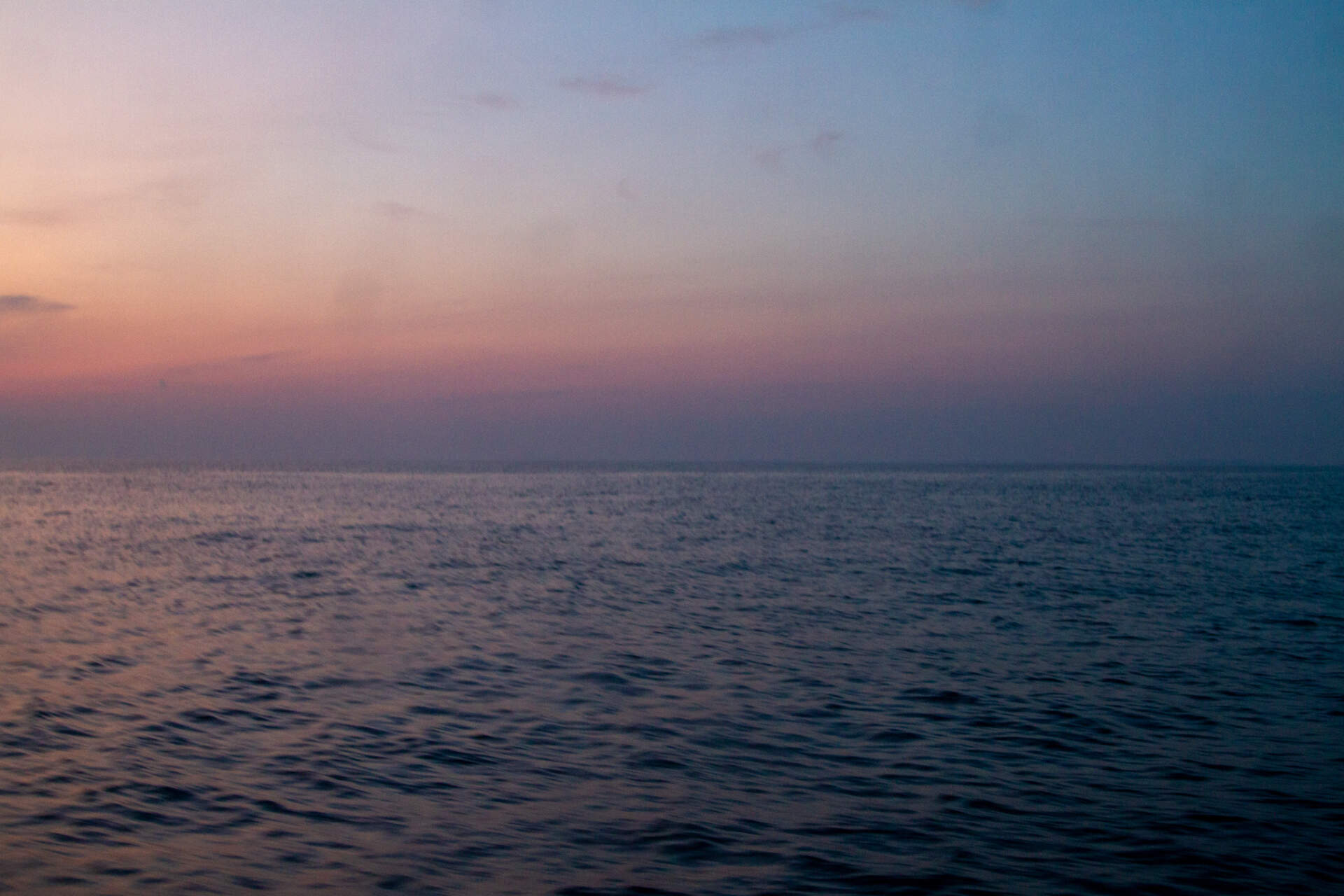
The Public’s Radio in Rhode Island and WBUR have a partnership in which the news organizations collaborate and share stories. This story was originally published by The Public's Radio.
Correction: A previous version of this story said the black sea bass bait used was a mixture of clams and fish guts. That is incorrect. It was only clams.